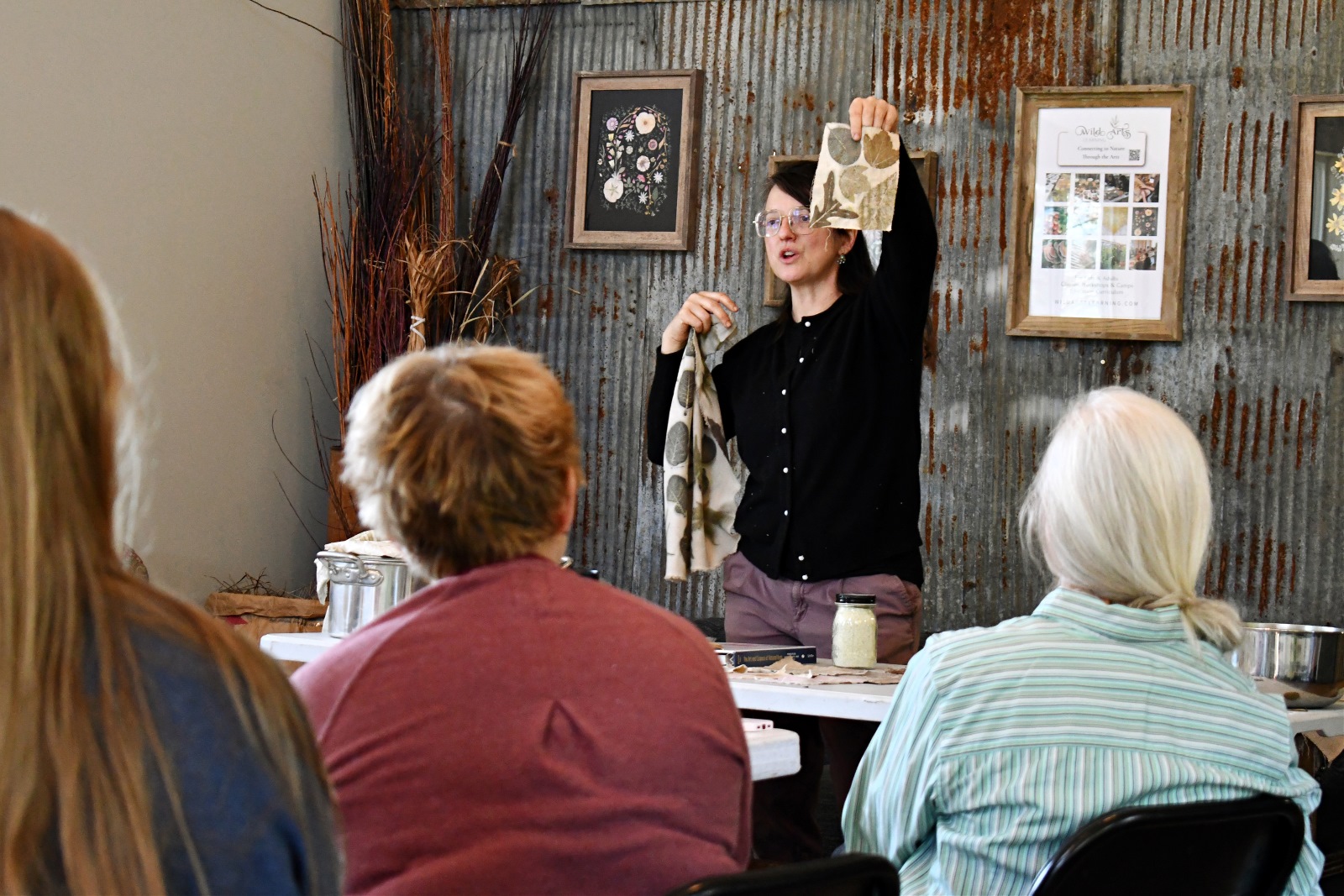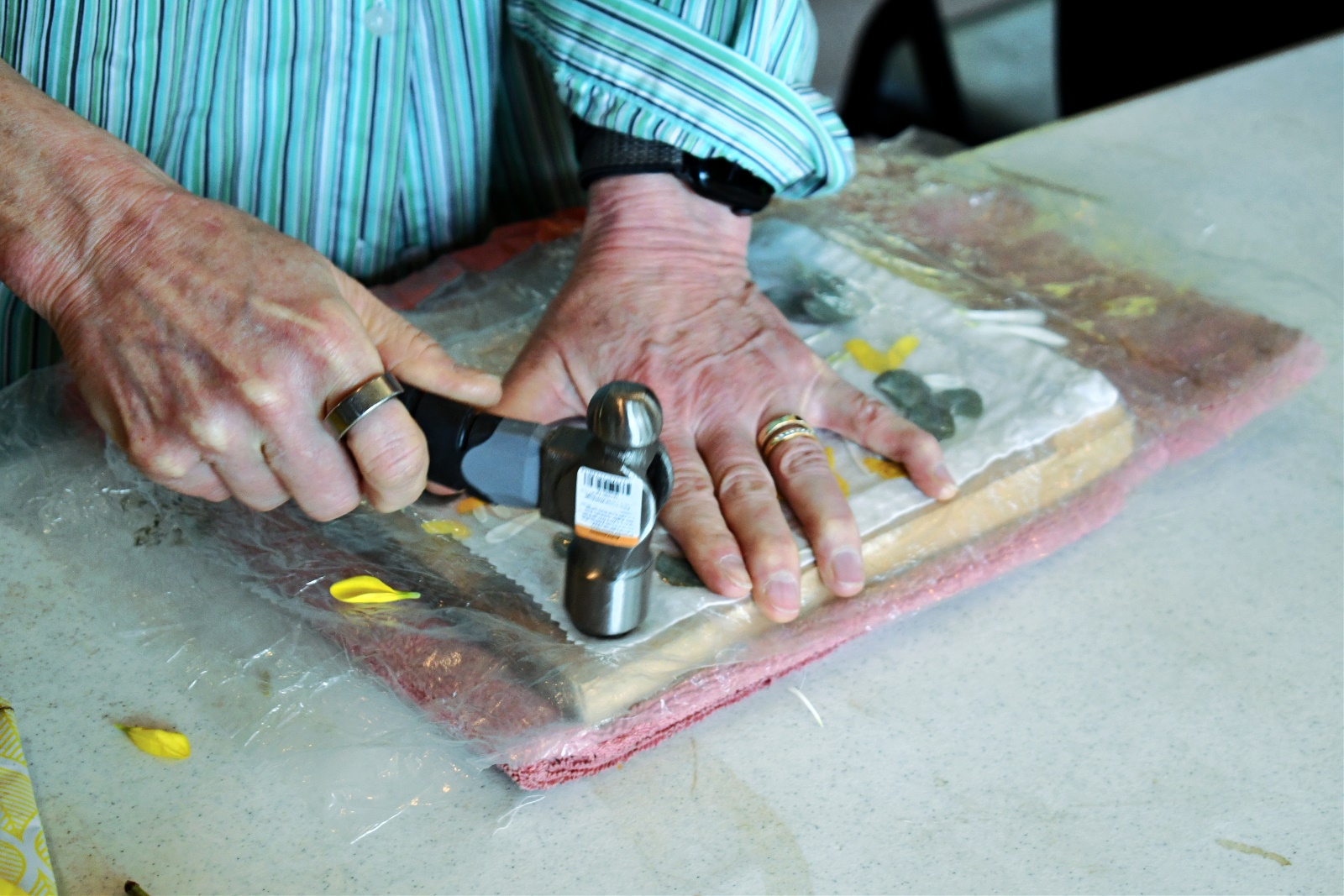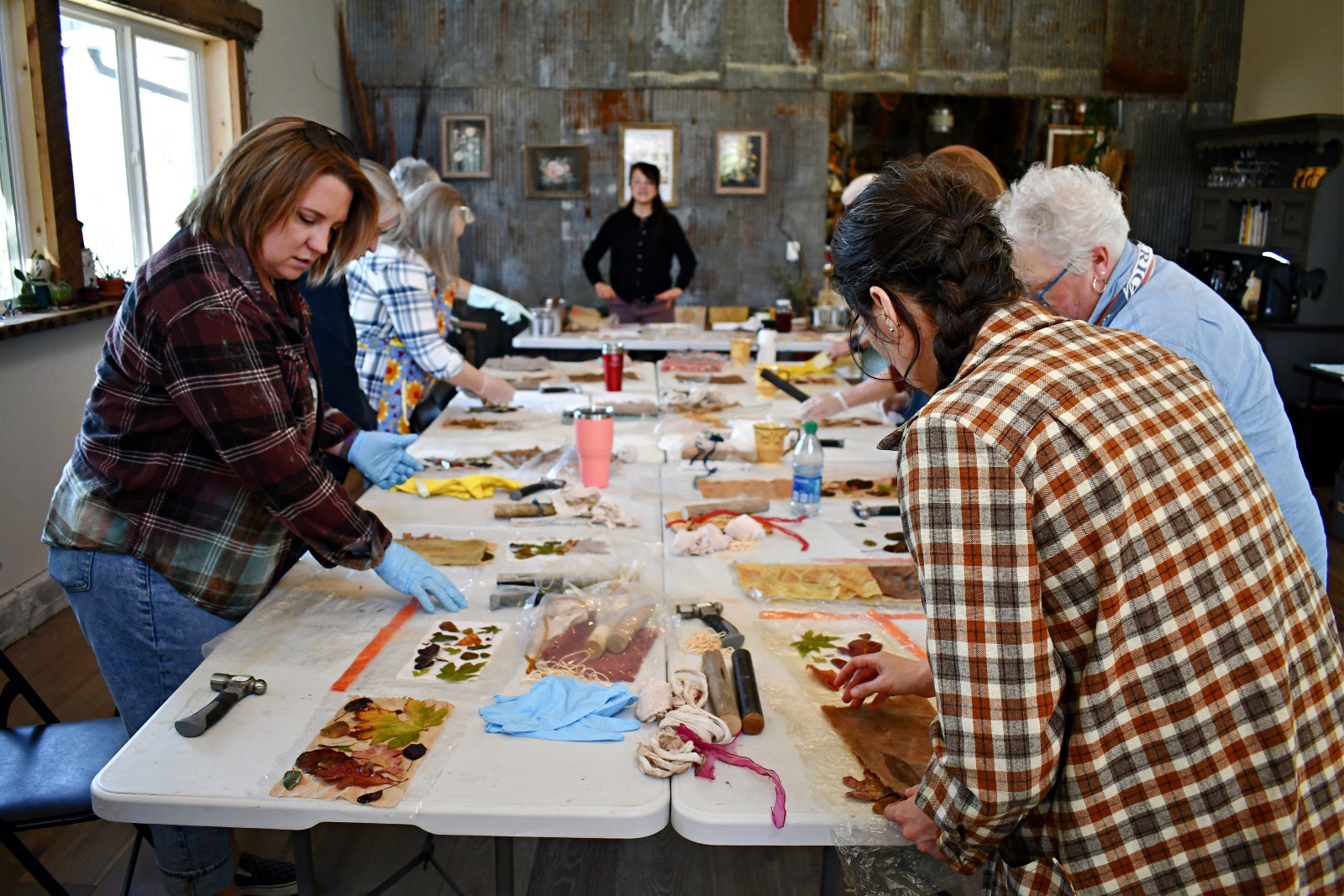Wild Arts Learning is an educational initiative that shares nature-based and art-infused classes and curriculum, and connects two continents — yet has a center that may be reached by a 15-minute drive from Springfield.
Tucked-away east of town, Wild Arts Learning Center is where students take classes in subjects like mushroom cultivation and creating natural pigments. At other times, guest instructors are invited to share, like when foraging expert Bo Brown gave a class on fermentation.
It’s all part of connecting people to nature by way of the arts.
“The Wild Arts Learning Center is as important an endeavor as any project offering pathways for people to connect with community, with the land around them and their own creativity,” Cina Canada, the center’s founder/director, wrote via an email interview. “For me, it’s critical that our communities hold, nurture and carry on these types of education opportunities for all people, but especially our kids.”
A full schedule of classes began at the center in January. Currently, it offers five core classes for adults: Natural Pigments, Paints and Inks; Intro to Botanical Printing; Wild Clay; The Art of Pressed Flowers; and Weaving the Wild. At various times, classes are also available for children.
Wild Arts Learning Center’s physical space and place

With lots of natural light, one gets the sense of nature in the Wild Arts building when walking through the door.
On a recent Sunday afternoon, Canada shared how to use leaves to print on fabric and paper through the botanical printing class, about a three-hour experience that cost $65. Participants learned the basics of plant-printing, using iron, leaves soaked in water and more to create their own art.
“Then we get into the fun part where you can go choose your dye blankets,” Canada told the class at one point in the process, referring to material that is wrapped with the students’ projects to give them color. “Just pick one and squeeze it out as best as you possibly can.”

Supplies for the class are placed along one wall; after attendees choose leaves and materials, they bring them back to the tables where they are given step-by-step instruction on how to create prints.
While the bundles process in a steamer in another room of the center, their creators gather with tea and coffee and discuss the why and how behind the art technique.
“For me, I’m most excited about a connection with these materials that we are using and how it connects us to place and to the land,” Canada noted. “We are nature, we aren’t separate from it and nature is not a place that we ‘go to.’ So it makes sense to be conscientious about that in all that we do, including our creative endeavors and understanding where our materials come from and how they impact who we are and where we are.”
There’s talk of plant-based dye and how colors can (or perhaps won’t) be held in different materials, allowing its shade to evolve over time.
“That’s part of the fun — the transitory nature of nature,” Canada said.
What the participants are saying

In addition to nature education, the class also offered an opportunity for family and friends to connect through a shared experience.
“I think it’s really neat, and I like all of the natural products and things you can literally find in your yard,” says Hannah Vodicka, who came to the class with her mother, sister and daughter. “It’ll be a cool project.”
Another attendee was Laura McCaskill of Springfield, whose first time at the center was for the botanical printing class.
“She was very organized, and she has a great studio,” said McCaskill of the experience and Canada’s approach. “I think she’s very knowledgeable, but I also think she’s incredibly mindful. Everything is natural. Sometimes that’s really hard to do.
“You think about nature around you, and being able to make a dye blanket out of marigolds or walnut shells or burr oak — that’s pretty cool.
“She teaches these techniques and appreciation of nature, and what nature will provide.”
Creating connection across continents

With its focus on southwest Missouri nature, it's clear that Wild Arts Learning has ties to place. But Wild Arts Learning's mission — both through its Greene County site and one thousands of miles away on the island of Sao Miguel in the Azores — has roots in the Ozarks that took years to grow.
At the Greene County center, it's found through Canada, who moved to the Springfield area when she was a teenager. It was mission work that drew her family to the Queen City and the Assemblies of God headquarters.
Back then, Canada was planning on a future in photography and travel — which she accomplished through years working abroad to create photo and video stories for nonprofits. As time passed, and her own education and understanding of nature work grew, another dream began to emerge. It was a dream that drew her back to the Ozarks.
“Throughout my adventures, I held a dream of ‘someday’ creating a learning center of sorts, a place of community and connection,” she says. “About five years ago, when I began running my first nature camp for kids, the idea of a nature-based learning center started to percolate.”
The classes are held in a workshop built on the property her parents bought for that mission work.
“The sole reason they bought this property was for service,” Canada said of her parents’ home, where the studio for Wild Arts Learning classes now also stands. “As they began thinking about retirement, I asked if I could start developing this place as a ‘learning farm.’ I wanted to continue developing their little spot in the world for service, just in a very different capacity.
“After working around the world for so many years, creating something here at home, to serve in and connect with my local community, has already been deeply fulfilling.”
Taking the Ozarks and Wild Arts international

Then there's that European connection. It's found through another Ozarker: Bethany Joy, who Canada said grew up around Springfield before moving abroad and landing at the Blue-Footed Donkey Farm on San Miguel.
The two locations are owned independently, but each serves as Wild Art Learning's “home base” on their respective continents. Canada and Joy also collaborate on online education, as well as with an eight-unit curriculum for kids that ties to four key skill buckets: observation and identification; proper use of natural materials; sense of place and local ecology and foraging and basic botany.
“The Wild Arts Learning curriculum is the heart of Wild Arts Learning,” Canada said, noting that the foundation was really inspired by youth nature camps.
“Really, the learning center started as a way to run, test and develop that curriculum in real-time, in-person. As we finalized the full curriculum, it will be available for educators to take and contextualize for their own communities, wherever they are.”
And more programming in the works, Canada noted, sharing that a conference for teachers is anticipated for the fall of 2024.
More about Wild Arts Learning’s offerings may be found on the organization's website.

